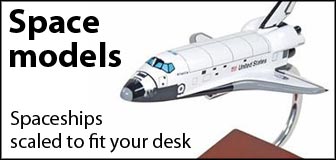Scientists reveal shortlist for comet landing
BY STEPHEN CLARK
SPACEFLIGHT NOW
Posted: August 27, 2014

Scientists have narrowed a list of candidate landing sites for the Philae lander, a piggyback probe on Europe's Rosetta mission that will attempt the first ever descent to a comet this fall and latch onto its jagged surface.
Officials met in Toulouse, France, last weekend to go over Rosetta's initial findings and whittle down the list of potential destinations for Philae.
The sites on comet 67P/Churyumov-Gerasimenko were assigned a letter from an original pre-selection of 10 possible sites. Three sites (B, I and J) are located on the smaller of the two lobes of the comet and two sites (A and C) are located on the larger lobe, according to an ESA press release.
The letters do not indicate a ranking of the sites.
The descriptions of each site shown below come from the European Space Agency.
Read our full story for details.

Philae's five candidate landing sites are seen in global photos of comet 67P/Churyumov-Gerasimenko. See a larger image. Credit: ESA/Rosetta/MPS for OSIRIS Team MPS/UPD/LAM/IAA/SSO/INTA/UPM/DASP/IDA

This image shows a zoom into candidate site A, which is located on the larger lobe, but in good view of the smaller lobe. The region is interesting because the terrain between the two lobes is likely the source of some outgassing. However, higher-resolution imaging is needed to study potential surface hazards such as small depressions and slopes, while the illumination conditions also need to be considered further. Credit: ESA/Rosetta/MPS for OSIRIS Team MPS/UPD/LAM/IAA/SSO/INTA/UPM/DASP/IDA

This image shows a zoom into candidate site B, which is located within the crater-like structure on the smaller lobe. This site is considered relatively safe for landing given the flat terrain, but illumination conditions may pose a problem when considering the longer-term science planning of the lander. Higher-resolution imaging will be used to assess the boulder hazards in more detail. In addition, the boulders are also thought to represent more recently processed material and therefore this site may not be as pristine as other sites. Credit: ESA/Rosetta/MPS for OSIRIS Team MPS/UPD/LAM/IAA/SSO/INTA/UPM/DASP/IDA

This image shows a zoom into candidate site C, which is located on the larger lobe of the comet. It hosts a range of surface features including some brighter material, depressions, cliffs, hills and smooth plains, but higher-resolution imaging is needed to assess the risk of some of these features. It is also well illuminated, which would benefit the long-term scientific planning for Philae. Credit: ESA/Rosetta/MPS for OSIRIS Team MPS/UPD/LAM/IAA/SSO/INTA/UPM/DASP/IDA

This image shows a zoom into candidate site I, which is located on the smaller lobe of the comet. It is a relatively flat area that may contain some fresh material, but higher-resolution imaging is needed to assess the extent of the rough terrain. The illumination conditions would also allow for longer-term science planning. Credit: ESA/Rosetta/MPS for OSIRIS Team MPS/UPD/LAM/IAA/SSO/INTA/UPM/DASP/IDA

This image shows a zoom into candidate site J, on the smaller lobe of the comet. Similar to site I, this site also offers interesting surface features and good illumination. It offers advantages for the CONSERT experiment compared with I, but higher-resolution imaging is needed to determine the details of the terrain, which shows some boulders and terracing. Credit: ESA/Rosetta/MPS for OSIRIS Team MPS/UPD/LAM/IAA/SSO/INTA/UPM/DASP/IDA
|
|









